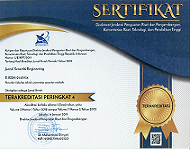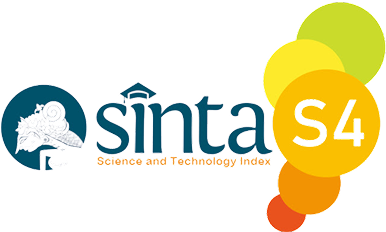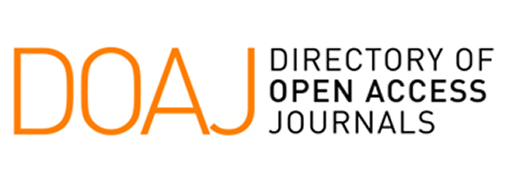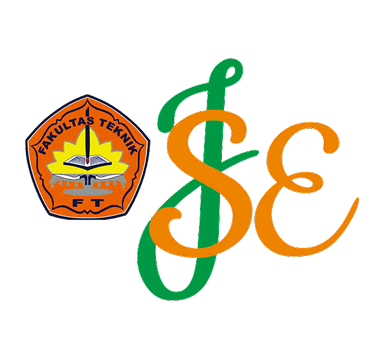Analisis Risiko Pengolahan Limbah Bahan Berbahaya dan Beracun dengan Cara Termal Melalui Insinerasi (Studi Kasus: PT. XYZ)
Keywords:
Limbah B3, Insinerasi , RisikoAbstract
Rapid industrial growth increases the production of hazardous and toxic waste (LB3), which, if not managed properly, can pose a serious risk to human health and the environment. This study analyses the risks associated with the incineration of hazardous waste at PT XYZ, using the Hazard Identification, Risk Assessment and Risk Control (HIRARC) approach based on the AS/NZS 4360:2004 standard. Hazard identification is conducted via Job Safety Analysis (JSA), while risk assessment considers likelihood and severity. The results show that the infectious waste feeding process and combustion emissions pose the greatest risk (high and very high), with potential consequences including exposure to chronic diseases and environmental pollution. Risk control is achieved by providing personal protective equipment (PPE), monitoring flue gas emissions and managing incinerator residues in accordance with regulations. This study highlights the importance of implementing strict risk management measures and technological innovations to mitigate the negative impacts of hazardous waste incineration.
References
[1] Peraturan Pemerintah Republik Indonesia Nomor 22 Tahun 2021 tentang Penyelenggaraan Perlindungan dan Pengelolaan Lingkungan Hidup, Kementerian Lingkungan Hidup dan Kehutanan, 2021.
[2] H. Agustina, "Urgensi tata kelola limbah B3," Pojok Iklim Kementerian LHK, Feb. 19, 2020. [Online]. Available: http://pojokiklim.menlhk.go.id/read/urgensi-tata-kelola-limbah-b3.
[3] E. Oktarinasari, M. Yusuf, and T. Arief, “Kajian Pengelolaan Limbah B3 Hasil Dari Kegiatan Pertambangan Batubara Study of B3 Waste Management Results From Coal Mining Activities,” J. Pertamb., vol. 3, no. 4, pp. 52–58, 2019.
[4] P. Lisbona, S. Pascual, and V. Pérez, “Waste to energy: Trends and perspectives,” Chem. Eng. J. Adv., vol. 14, no. April, 2023.
[5] Peraturan Menteri Lingkungan Hidup dan Kehutanan Republik Indonesia Nomor 6 Tahun 2021 tentang Tata Cara dan Persyaratan Teknis Pengelolaan Limbah Bahan Berbahaya dan Beracun, Kementerian Lingkungan Hidup dan Kehutanan, 2021.
[6] N. Aimi, A. Wahab, F. Nabilah, A. Rahiza, and N. Isa, “Hazard Identification, Risk Assessment and Risk Control (Hirarc) on Laboratory Waste Disposal in Chemistry Laboratory,” J. Acad., vol. 10, no. November, pp. 194–203, 2022.
[7] H. C. Palit and Alexander, "Hazard identification, risk assessment and control (HIRAC) at the wood processing industry," in Lecture Notes in Networks and Systems, vol. 855, pp. 244-252, 2023.
[8] J. Whitfield, “AS/NZS 43600 SET Risk Management Set,” Nature, vol. 428, no. 6983, p. 592, 2004.
[9] Y. Xiao and M. Watson, “Guidance on Conducting a Systematic Literature Review,” J. Plan. Educ. Res., vol. 39, no. 1, pp. 93–112, 2017.
[10] Fikri Naufal Uyun, Frency Siska, and Nurul Chotidjah, “Pengawasan Pemerintah Daerah terhadap Pengelolaan Limbah B3 Internal Rumah Sakit,” J. Ris. Ilmu Huk., pp. 52–56, 2022.
[11] Peraturan Menteri Tenaga Kerja dan Transmigrasi Republik Indonesia Nomor PER.08/MEN/VII/2010 tentang Alat Pelindung Diri, Kementerian Tenaga Kerja dan Transmigrasi, 2010.
[12] G. T. P. Laksono and A. Sari, Upaya Pengendalian Risiko Pada Unit Pengelolaan Limbah Medis Benda Tajam Di Rumah Sakit,” J. Public Heal. Educ., vol. 1, no. 1, pp. 40–47, 2021
[13] C. Block, J. Van Caneghem, A. Van Brecht, G. Wauters, and C. Vandecasteele, “Incineration of Hazardous Waste: A Sustainable Process?,” Waste and Biomass Valorization, vol. 6, no. 2, pp. 137–145, 2015.
[14] S. Alnezami, G. Lamaa, M. F. C. Pereira, R. Kurda, J. de Brito, and R. V. Silva, “A sustainable treatment method to use municipal solid waste incinerator bottom ash as cement replacement,” Constr. Build. Mater., vol. 423, p. 135855, Apr. 2024.
[15] R. Muthuraja et al., “Assessment and classification of different ashes from waste incinerators in Thailand,” Results Eng., vol. 24, no. September, 2024.
[16] Resosudarmo, Budy P. "Indonesia's clean air program." Bulletin of Indonesian Economic Studies 38.3 (2002): 343-365.
Downloads
Published
Issue
Section
License
Copyright (c) 2025 Surya Adi Wicaksono, Ibnu Susanto Joyosemito , Haudi Hasaya (Author)

This work is licensed under a Creative Commons Attribution 4.0 International License.












